#waterfallmodeling
Explore tagged Tumblr posts
Text

The Growth of Software Development Methodologies
From Waterfall to Agile and Beyond – How Software Development Has Evolved Over the Years!
Ever wondered how we went from long, linear development models to today’s fast, iterative, user-focused systems? This infographic breaks it down beautifully – tracing the evolution of software development methodologies from the early days of Waterfall to the rise of Agile, Scrum, DevOps, and even modern AI-driven development.
Each methodology didn't just pop up out of nowhere – they were responses to real-world challenges in speed, flexibility, collaboration, and quality.
Whether you're a developer, project manager, or just tech-curious, this timeline gives you a clear picture of how far we've come—and where we might be headed next.
Check it out! You might just find your favorite development method here
#SoftwareDevelopment#Agile#DevOps#Scrum#WaterfallModel#ProgrammingLife#TechTimeline#DeveloperTools#ModernDevelopment#TechInfographic
0 notes
Text
Waterfall project management is a traditional and widely used project management methodology. It is known for its linear and sequential approach, ensuring that each phase is completed before the next one begins. Despite the growing popularity of Agile methodologies, the Waterfall model remains relevant, especially in industries where structure, predictability, and documentation are crucial.
This blog will explore Waterfall project management, including its methodology, process, lifecycle, advantages, and disadvantages. We will also compare Waterfall vs Agile, provide examples, templates, tools, and case studies, and guide you through the steps necessary to implement a successful Waterfall project plan.
#WaterfallProjectManagement#WaterfallModel#WaterfallMethodology#WaterfallVsAgile#WaterfallApproach#WaterfallProcess#WaterfallLifecycle#WaterfallProjectPlan#WaterfallProjectManagementExample#WaterfallProjectPhases#WaterfallProjectManagementSteps#WaterfallProjectManagementAdvantages#WaterfallProjectManagementDisadvantages#WaterfallProjectManagementTools#WaterfallProjectManagementCaseStudy
0 notes
Text
How to Choose the Right Software Development Methodologies for Your Next Project?
Software development methodologies are vital for managing the challenges of software development, such as changing requirements and deadlines. Various methodologies, including Agile, Scrum and Spiral, are available, but selecting the right one is crucial as not all are suitable for every type of software. By choosing a suitable methodology and adhering to it, developers can ensure efficient work, effective communication and proper documentation, resulting in the timely delivery of high-quality software.
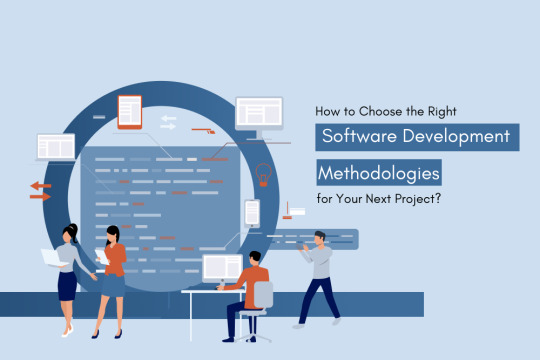
What are software development methodologies?
Software development methodologies consist of a series of processes and procedures implemented during the software development lifecycle, with the aim of benefiting both the development team and the clients.
An in-depth look at software development methodologies
To deliver high-quality products, custom software development companies leverage various methodologies such as Agile, Spiral, Scrum, Extreme Programming, Rational Unified Process and Big Bang.
Agile methodology
Agile methodology is an iterative approach to software development that prioritizes continuous planning, communication and collaboration between teams and clients. Other frameworks like Scaled Agile Framework (SAFe), Large-Scale Scrum (LeSS) and Scrum of Scrums (SoS) can customize Agile practices to meet the needs of a specific organization or project.
Phases
The software development process typically consists of several key phases:
Concept Phase
Inception Phase
Iteration Phase
Quality Assurance
Software Release
Scrum methodology
The Scrum methodology follows an iterative development approach, where team members break down large tasks into smaller ones and work on them using sprints. This incremental approach accelerates development and adds value to complex projects. Moreover, the Scrum framework enables developers to incorporate conventional system development methodologies with flexible Agile practices.
Phases
The Scrum process involves several phases:
Product Backlog
Sprint Backlog
Daily Scrum Meeting
Product Increment
DevOps
DevOps, a term that gained popularity in the IT industry between 2007 and 2008, refers to a set of advanced tools, practices and process automation philosophies that combine IT operations with software development. By providing a framework for building, testing and releasing software rapidly. DevOps ensures improved outcomes and enables the continuous delivery of products.
Phases
The DevOps process involves several phases:
Continuous Integration
Continuous Testing
Continuous Development
Continuous Deployment
Continuous Monitoring
Waterfall Model
Winston Royce introduced the Waterfall Model in 1970 through his research paper. This sequential and linear approach emphasizes the systematic progression of steps in the development process. In the Waterfall Model, each stage must be fully completed before the next phase can begin.
Phases
The software development process typically includes the following phases:
Requirements analysis
Design
Implementation
Unit testing
Integration and system testing
Operation and maintenance
Iterative
The iterative or incremental development model breaks the entire software development process into smaller segments, enabling teams to gradually improve the evolving versions until the entire system is ready. This model helps identify issues and make necessary improvements within a limited budget in the initial stages of the software development life cycle.
Phases
The Iterative process includes the following phases:
Planning
Analysis
Implementation
Evaluation
Spiral Model
A spiral model is a hybrid approach that blends iterative and waterfall models. It is risk-driven, with each phase beginning with a predetermined goal and ending with a client review. The development team adds new features in a continuous spiral, increasing in scope with each iteration until deployment.
Phases
The spiral model typically includes the following phases:
Planning
Risk Analysis
Engineering
Evaluation
V Model
The V Model is a commonly used software development methodology that incorporates testing at each stage of the project, allowing for the timely completion of the project. However, each step must be completed before moving to the next, ensuring that the project stays on track and on target.
Phases
The V Model includes the following phases:
Unit Testing
Integration Testing
System Testing
User Acceptance Testing
Big Bang
The Big Bang model is a simplistic approach to software development that is suitable for small projects but may lead to quality issues in larger projects due to the absence of in-depth planning and testing. Additionally, changes in requirements can cause significant delays, making it difficult to manage the project as a whole.
**Unlike other SDLC models, the Big Bang model doesn’t have specific phases.**
Feature-Driven Development (FDD) Model
Feature-driven development (FDD) is a software model created in 1997 by Jeff De Luca and Peter Coad for a Singaporean bank project. They built it in 15 months with 50 professionals. The FDD team comprises a project manager, chief programmer, chief architect, development manager, class owner and domain expert. In the first phase, an overall model of the system is created to provide a high-level view of the features to be developed.
Phases
The Feature-Driven Development (FDD) Model includes the following phases:
Build a Feature List
Plan by Feature
Design by Feature
Build by Feature
Test by Feature
Integrate Features
Launch the System
Prototype Methodology
The prototype methodology involves creating an initial version of the software system that may have limited functionality, reliability and efficiency compared to the final product. However, it is a valuable tool as it allows the client to visualize and better understand the expected outcome of the final software product, which may not have been clear in the initial stages of the project.
Phases
The Prototype Methodology includes the following phases:
Requirement collection and analysis
Faster design
Create a prototype
Initial user evaluation
Redefining prototype
Implementation of product
Timely maintenance
Rapid Application Development Methodology
The Rapid Application Development (RAD) methodology emphasizes quick customer feedback and rapid prototyping over prolonged development and testing cycles. This approach enables developers to make frequent iterations and updates to software efficiently, without starting from scratch each time. Moreover, RAD ensures that the outcome is high-quality and meets the end user’s requirements.
Phases
The Prototype Methodology includes the following phases:
Goal Planning
Prototype Design
Rapid Development
Production
Lean Development
The primary objective of the lean software development methodology is to minimize waste, improve efficiency and deliver the necessary features for the product. This approach involves releasing an initial software version developed by software engineers.
Principles
Here are some fundamental principles and practices often associated with lean development:
Define value from the customer’s perspective.
Map the value stream and identify waste.
Create flow by eliminating waste and optimizing the value stream.
Establish pull by letting customer demand drive development.
Pursue perfection by continuously improving the process.
Summary
Choosing the right software development methodology for your project is crucial and depends on various factors such as project scope, budget, resources, and time frame. It’s essential to analyze the pros and cons of each methodology and consider the necessary tools and expertise required. Our experts can assist you in selecting the best methodology for your enterprise.
0 notes
Text
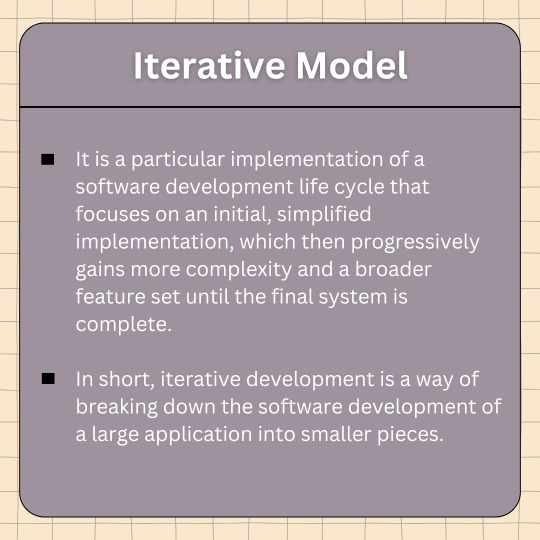
Iterative Model . . . . for more information on SDLC models https://bit.ly/44dhf8M check the above link
0 notes
Text
Optimize Your Development Strategy with These Top App Methodologies
When it comes to developing an app, picking the right methodology can make all the difference. This engaging infographic breaks down some of the most popular frameworks used in app development, such as Agile, RAD, Feature-Driven Development (FDD), and the Spiral model. Each method has its own set of strengths, depending on factors like your team setup, project deadlines, and end goals. By understanding what each framework brings to the table, you can choose the best fit for your team, making your workflow smoother and helping to deliver a higher-quality product. It’s a helpful guide for project managers, developers, and tech startups aiming to work more efficiently.
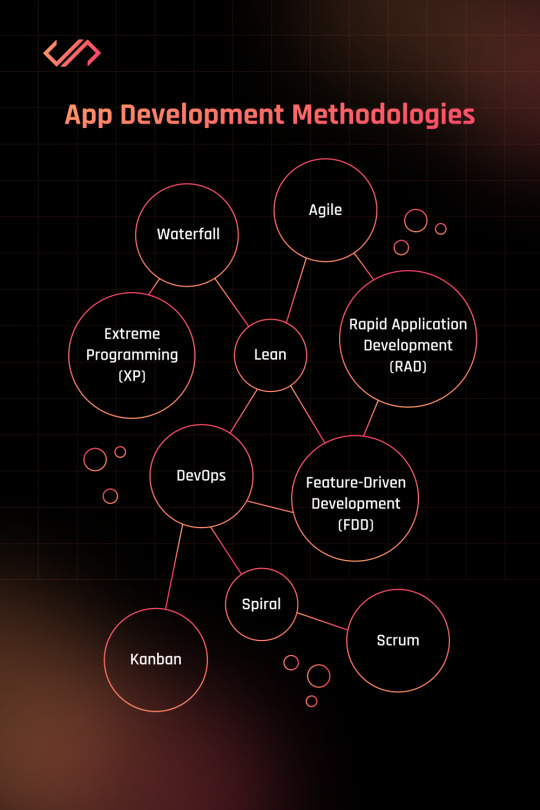
#jhavtechstudios#mobileapps#technology#mobile app design#app developers#app development#mobileappdevelopment#webdesign#agile development#waterfallmodel#devops#softwaredevelopment
1 note
·
View note
Text

🖥️ From Idea to Execution – Master the Software Development Life Cycle (SDLC) Every successful software project starts with a solid foundation. The SDLC is a structured process that ensures your software is built efficiently, meets user needs, and is delivered on time. 🔍 Whether you're building a mobile app or enterprise system, SDLC helps streamline: 1️⃣ Requirement Analysis 2️⃣ System Design 3️⃣ Development 4️⃣ Testing 5️⃣ Deployment 6️⃣ Maintenance
✅ Reduced Development Time ✅ Better Project Management ✅ High-Quality Deliverables ✅ Minimized Risks & Bugs
Understand the process. Improve collaboration. Deliver better software.
💡 Adopt SDLC and watch your project go from concept to success, the smart way!
#SDLC #SoftwareDevelopment #TechWorkflow #ProjectManagement #SoftwareEngineering #AgileDevelopment #WaterfallModel #SystemDesign #CodingLife #QualitySoftware #SoftwareTesting #DevLife #SoftwareLifecycle #DeploymentProcess #TechSolutions #InnovationThroughProcess
0 notes
Link
How much time will it be and what will it cost? Let’s look at a few points about what kind of handrails we have.
#WebDevelopment#SCRUMMethodology#Waterfallmodel#SoftwareDevelopment#AgileMethodology#MobileAppDevelopment#DevelopmentCost#AgileDevelopment
2 notes
·
View notes
Text
Methodologies Of Software Development Life Cycle
Methodologies for software application development have evolved greatly over time. Most of these methodologies have become obsolete and irrelevant. At Symphony Software, we use dominant SDLC frameworks, including Agile and DevOps to ensure that the final product fits end users .
Whether you’re a software development company or someone who needs customized software, it’s worth looking at SDLC methodologies chronically.

Here we go:
Old SDLC Methodologies
Waterfall - The First SDLC Methodology (the 1970s to 90s)
This linear-sequential model goes through all SDLC phases without overlapping. The next phase can begin only if the previous one is complete. This method tended to be lengthy and costly. So, technology leaders started seeking more flexible alternatives.
Prototyping Model
This software engineer method involves creating low-cost prototypes. Prospective users use the prototype and provide early feedback to project managers. Accordingly, prototypes are converted into the final product as per the client’s requirements.
Iterative Model
An early precursor to Agile, the iterative model involves a development team creating the first version of the software based on initial requirements. Then, more iterations are created as additional requirements are identified. Each iteration goes through all SDLC phases, and cycles are repeated until completion.
Spiral Model
This model involves identifying risks before recommending an approach that combines different SDLC methodologies, including Waterfall and Iterative. The one-size-fits-all approach doesn't work here.
V-Shaped Model
Similar to the waterfall model, the next stage in the V-shaped framework begins only when the previous one is finished. However, it stands unique in that testing takes place at every development stage. Software testers verify whether every requirement has been met and validate the system for users and stakeholders.
Modern SDLC Methodologies
Lean Model
The Lean model for software development focuses on eliminating waste, making decisions as late as possible, and delivering results faster. Teams work to find ways to reduce waste at every step. At its core, the model empowers the entire project team in decision-making.
Agile Model
The agile model combines an incremental and iterative approach. The software is released, tested, and improved at each iteration. Surprisingly, the agile model encourages fast failure because it's believed that failing fast and early helps discover minor issues before they turn major.
Scrum Model
The Scrum model is a popular Agile framework that emphasizes close and continuous collaboration. It involves special development cycles known as Sprints.
A Scrum Master manages and improves all processes and helps teams abide by Agile values for maximized productivity. Scrum Masters also ensure that the whole process and progress are transparent to concerned stakeholders.
DevOps
DevOps is basically a hybrid of lean and agile. In this model, both developers and operation teams collaborate to speed up and innovate the software development process. It involves continuous feedback, improvements, and the automation of manual processes.
Which one is the best?
Of course, modern SDLC methodologies have added advantages. But to make an informed decision, it’s important to dig deeper into these models. So, don't forget to read our next blog, "What is Waterfall and its pros & cons."
Got a project idea? You can discuss with us to decide which model can best fit your idea. Please contact us at [email protected] or 414-218-4644
https://symphony-software.com/contact-us-milwaukee-web-design-and-mobile-app-development
#SDLC#OldSDLCMethodologies#ModernSDLCMethodologies#softwaredevelopment#agilemodel#devops#waterfallmodel
0 notes
Photo
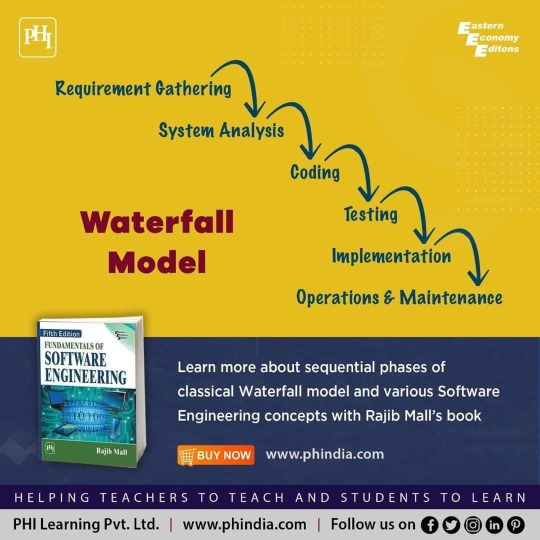
The waterfall model is a sequential design process in which progress is seen as flowing steadily downwards (like a waterfall) through the phases of Conception, Initiation, Analysis, Design, Construction, Testing, Production/Implementation, and Maintenance. Learn More about the sequential phase of classical waterfall model and various software engineering concepts with Rajib Mall's book : https://bit.ly/2YrEiKj #waterfallmodel #softwarelifecycle #testing #SoftwareProjectManagement #coding #SoftwareMaintenance https://www.instagram.com/p/CY6QuJEl86-/?utm_medium=tumblr
1 note
·
View note
Link
0 notes
Photo

4 Easy ways to transition from Waterfall to Agile Agile might seem just a process but organizations need to undergo a magnitude of change. Here you can find 4 easy ways to transition from Waterfall to Agile.
#agilecoaching#agilemanagement#agilenttechnologies#waterfallmodel#waterfallmethodology#agilelovers#agilepm#agileperformance#agile2020#agileinstitute#agilework#waterfallmethodologyvsagile
0 notes
Photo

👉👉Project is under working🤗🤗 👇👇👇👇👇👇👇👇👇 For any IT related services contact Us Now USA:+1(512)7348342 INDIA:+91-8983485655 👉👉Check bio 📩[email protected] 🌐http://bit.ly/2nGzQb3 ------------------------------------------ #websitedevelopmentcompany #webdesigncompany #freelance #freelancewebdesign #wordpress #wordpressdevelopment #softwaredevelopmentcompany #shopify #woocommerce #magento #softwaredevelopment #responsive #customsoftware #outsourcecomany #seo #waterfallmodel #smm #digitalmarketing #outsourcecomany #outsourcing #freelancewebdesign (at AustinTX) https://www.instagram.com/p/B4hXlhwAZOo/?igshid=qspb6dodwa65
#websitedevelopmentcompany#webdesigncompany#freelance#freelancewebdesign#wordpress#wordpressdevelopment#softwaredevelopmentcompany#shopify#woocommerce#magento#softwaredevelopment#responsive#customsoftware#outsourcecomany#seo#waterfallmodel#smm#digitalmarketing#outsourcing
0 notes
Text
W-AGILE isn’t about choosing one methodology over the other; it’s about blending the strengths of Agile and Waterfall to meet the unique demands of your project. Whether you’re dealing with fixed deadlines, evolving requirements, or diverse teams, WAGILE provides a structured yet flexible framework that adapts to challenges while keeping goals on track.
By understanding when and how to use WAGILE, you can deliver projects more efficiently, effectively, and confidently.
#ProjectManagement#WAGILE#AgileMethods#WaterfallModel#HybridApproach#ProjectPlanning#AgileFramework#TeamCollaboration#ProjectSuccess#FlexiblePlanning#StakeholderEngagement#RiskManagement#RegulatoryCompliance#TechProjects#EfficientWorkflows
0 notes
Photo

A distribution waterfall is a method in which capital gains of the fund are distributed between or among investors or partners, typically between limited partners (LPs) and general partners (GPs). The profits earned are distributed according to the cascading structure of sequential tiers with reference to waterfall. Basically, when the first tier's allocation requirement is satisfied, the excess funds will be subjected to the next tier's requirement.
0 notes
Text
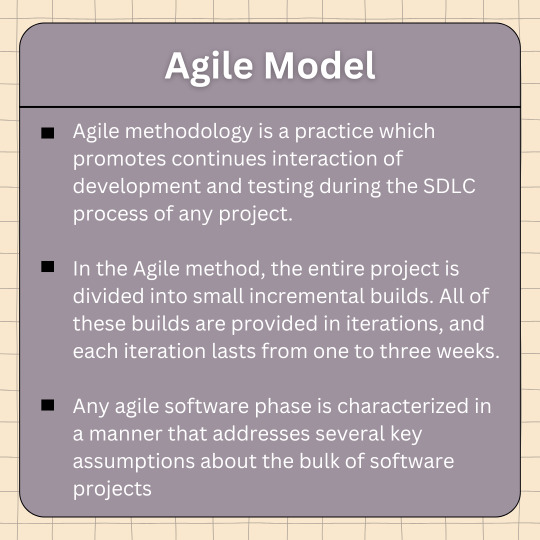
Agile Model . . . . for more information on SDLC models https://bit.ly/4i4LO3G check the above link
0 notes
Photo

Agile vs Waterfall | Which Software Development Approach Would You Choose? | Edureka http://ehelpdesk.tk/wp-content/uploads/2020/02/logo-header.png [ad_1] DevOps Certification Courses - h... #agile #agilemethodology #agilevswaterfall #agilevswaterfallmethodology #agilevswaterfallsoftwaredevelopment #amazonfba #analysis #business #businessfundamentals #comparisonofwaterfallandagile #devopsedureka #differencesbetweenwaterfallandagile #edureka #excel #financefundamentals #financialanalysis #financialmodeling #forex #investing #microsoft #modelsforsoftwaredevelopment #pmbok #pmp #prosandconsofwaterfallmodel #realestateinvesting #sql #stocktrading #tableau #waterfallmodel #waterfallvsagile #waterfallvsagileapproach #waterfallvsagileprojectmanagement #whatisagilemethodology #whatiswaterfallmodel #whentouseagilemethodology #ytccon
0 notes